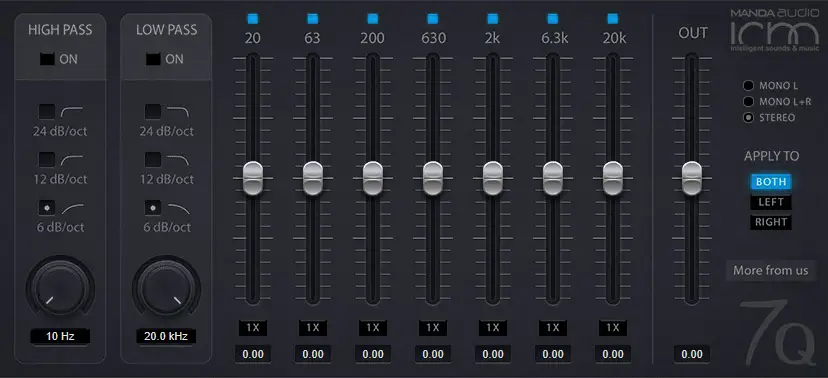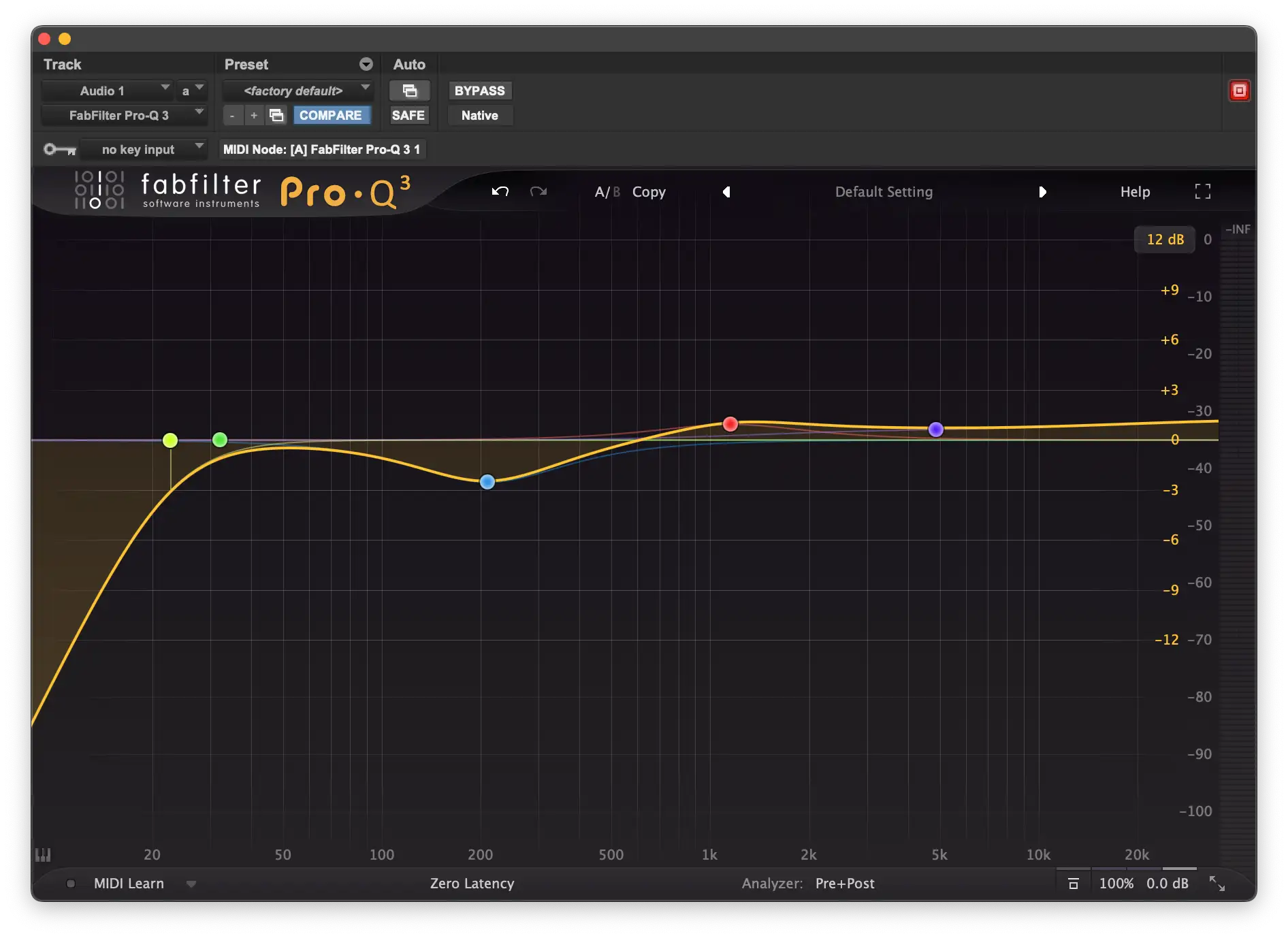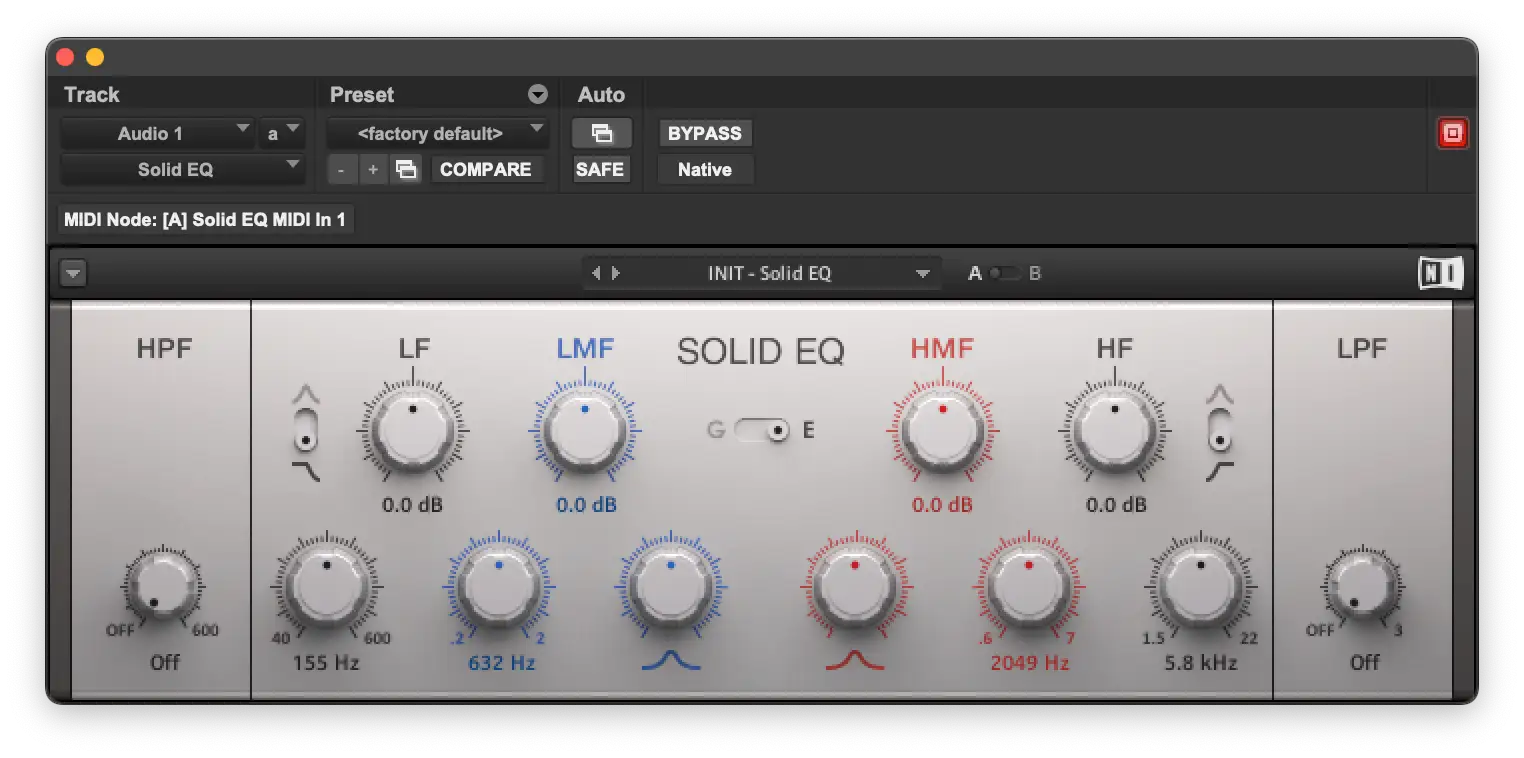Equalization, or EQ is one of the most powerful tools an audio engineer has at their disposal. Whether you're working in music production and want to sculpt the perfect mix, or you're a live sound engineer doing battle with the unruly acoustics of a room, EQ can work magic on your sound.
With a surprisingly small number of tweaks, EQ can bring clarity to muddy vocals , erase problematic frequencies, or bring a spark of freshness to a dull mix .
But there's more to it than just twiddling knobs or dragging sliders all willy-nilly. Understanding the different types of EQ and how they can be used to shape audio is a skill any music producer or engineer should know.
Which is why we wrote this guide! We'll be breaking down the basic types of EQ, looking at their practical applications, and throwing in some tips on using EQ effectively in audio mixing.
Let's dive in!
What Is EQ?
Equalization, or EQ for short, is the process of sculpting frequencies within an audio signal to change the qualities of the sound.
In simpler terms, it's the technique of adjusting the bass, mids, or trebles of a sound to make it clearer, cleaner, and generally more pleasing to the ear.
In music production, EQ is crucial for balancing individual elements in a mix, carving out space for each instrument, voice, or effect to blend seamlessly together. It can also be used creatively for sound design work.
In live sound, EQ takes on an additional role, helping to tame resonant frequencies in a venue, and eliminating feedback.
Whether you're perfecting a bass sound , or adjusting a PA to avoid an unpleasant ringing in the room, EQ is the key to making your audio sound polished and professional.
EQ Phrasebook
Before we take a look at the different types of EQ, it'll be helpful to understand some of the different terms used when talking about EQ.
Frequency:
Measured in hertz (Hz), frequency refers to where the sound, or part of the sound, falls on the frequency spectrum. The lower the frequency, the lower the sound, and vice-versa.
Bandwidth/Q:
The Q setting determines how much of the frequency content either side of the chosen frequency will be affected. A higher Q setting (or bandwidth) results in a narrower range, whereas a low Q setting will affect a wider range of frequencies.
Note that even a narrow Q band will still affect the surrounding frequencies to a certain extent.
Gain:
How much of the signal is boosted or cut (attenuated) at the chosen frequency.
Filter:
EQs use different filter shapes to determine how the signal is affected. We'll discuss EQ filters in detail later on.
Slope:
Some filter types use slope controls to determine how steeply frequencies are reduced or boosted beyond a specified cutoff point.
The Three Common Types of EQ
While there's a bajillion different EQ plugins available on the market (and for free! ), they all fall into three basic EQ types.
Graphic EQ

Graphic EQs offer a simple way of cutting or boosting frequencies across specific ranges, via a series of vertical sliders. The sliders on a graphic EQ represent pre-determined frequency bands; raising the slider will boost that range of frequencies, lowering it will result in a cut in that area.
The number of sliders on a graphic equalizer will vary depending on the unit or plugin. Some have as few as 7 bands, others graphic EQs have 30 or more.
The sliders make graphic EQs a good choice for making quick, broad adjustments, such as gently raising the highs, or boosting the low frequencies. A graphic EQ with more sliders will allow for more precise control over the frequency spectrum, and can be great for attenuating unwanted frequencies in a live venue.
What graphic equalizers don't have however is the ability to control the bandwidth, or Q of the frequency range being adjusted. This means they're not great for surgical work, or creative sound design.
Graphic EQs are often what you'll find on guitar pedals, oldy-worldy home stereo systems, and in the front of house rig in live venues.
Parametric EQ

A parametric equalizer is a multiband EQ that offers control over many adjustable parameters, including bandwidth range, the specific frequency range (known as the center frequency), and the ability to choose the filter type being used to affect the frequency.
With parametric EQ plugins, you can create an individual filter shape for each frequency band. For example, you can apply a low pass filter at 90Hz to roll off bass frequencies, a high shelf filter to gently boost the higher frequencies, and hone in on specific frequencies to cut using bell curves with a narrow Q range.
This makes parametric EQs the most versatile when it comes to both surgical fixes and creative sound-shaping, and as such they're the go-to tool for most producers and engineers.
Semi-Parametric EQs
A second version of the parametric EQ is the semi-parametric EQ. These types of EQ offer slightly less functionality than a parametric EQ. Often there'll be a limited number of frequency bands that can be adjusted, and sometimes there'll be no adjustable Q.

Since this type of EQ doesn't allow the user to make the kind of precise adjustments available on a fully parametric EQ, they're less useful for attenuating specific frequency bands and fine-tuning a sound. However many EQ plugins that are modeled on analog semi parametric EQs can do a wonderful job of sweetening up a group bus or mix using subtle but broad strokes.
Dynamic EQ
A dynamic EQ combines the precision of a parametric EQ with the dynamic control of a compressor or expander. Whereas parametric EQs offer linear processing - adjusting specific frequencies with fixed gain adjustments, a dynamic EQ will respond in real time depending on the intensity of the incoming signal.
Working in a similar way to a compressor, dynamic EQs have a threshold level for each frequency band. Once the input goes above the threshold level the frequency range is attenuated (working like a compressor) or boosted (working like an expander). Some fancier models even have attack and release controls to change how quickly the EQ responds to the incoming signal.
Dynamic EQs are a huge help tackling problem frequencies that only rear their ugly head once in a while, and are especially useful when EQ-ing groups of instruments on an aux channel . They're even more powerful when sidechained !
Other Types of EQ

In addition to the three types of EQ listed above, there's a handful of specialized EQs and EQ techniques that engineers reach for to handle specific tasks.
Linear phase EQ
Traditional EQs, like parametric and dynamic EQs, are considered 'minimum phase EQs'. They all add a certain amount of phase shifting between frequencies. This coloration of sound is what gives different EQs their unique characteristics.
But if you're working with a complex signal, like a multi-mic'd drum kit or a stereo source, a linear phase EQ can be a better choice for maintaining a more natural tonal balance.
The downside of linear phase EQs is that they are hella resource hungry , leaving large latencies in their wake.
Passive EQ
Passive EQs are (or, at least were) EQs that use passive circuitry to shape the sound without active amplification. While these types of EQ are not wildly common, one of the most famous is the Pultec EQ, well known for producing a warm and musical tone in it's output.
Pultec EQs, and their modeled plugin equivalents, are distinct from graphic and parametric equalizers due to the ability to both boost and attenuate the same frequency range. While this may sound counter-intuitive, experimenting with this can lead to some wonderful tone-shaping.

Mid/Side EQ
Mid/side EQ is a form of EQ processing that only affects (you guessed it) the middle or side of a signal. Being able to manipulate the mid (center) or side frequencies individually is a powerful tool, especially at the mixing and mastering stage.

Matching EQ
As technology marches forward, software developers are conjuring up even more ways to make EQ a useful tool for music production. One of these is the matching EQ, which allows the user to capture the audio spectrum of a reference source and apply that EQ curve to a target destination.
Different Filter Shapes in EQ
There’s more to EQ than graphic, parametric, or dynamic equalizers. Knowing the different filters available on an EQ and how they work can mean the difference between a mediocre mix and a killer one.
High-Pass Filters and Low-Pass Filters
Low-Pass (LPF) and High-Pass (HPF) filter shapes are commonly used to cut frequencies above or below a certain range.
A high-pass filter (sometimes called a low cut) attenuates anything below a specified cutoff frequency, while allowing everything else to pass through. This can be used to remove low-end rumble, say, from mic handling or a passing subway train, while allowing the high frequencies through.

Low pass filters (or high cut filters) do the opposite, letting frequencies below a specified cutoff point to pass through, while attenuating frequencies above it. Commonly used to remove hiss or harsh frequencies, it can be used creatively to emulate the sound of something coming from behind a wall.

Using these filters strategically to remove unnecessary frequencies can create space in a mix for all instruments to shine.
Shelving EQ
A shelf filter will boost or attenuate everything above or below a certain frequency. A gentle high shelf filter boost can add sparkle to a vocal, while a low shelf filter cut can reduce boom from bass track without cutting out it's essential 'bassiness'.

Band Pass Filter
A band pass is essentially a high and low pass filter in one. This kind of filter only allows through a range of frequencies around a center frequency, while reducing lower and higher frequencies beyond this curve.

Selecting a more aggressive filter slope and narrower bandwidth will result in a more extreme reduction either side of the curve.

Notch Filters
A notch filter is designed to remove a very narrow frequency band while leaving everything else intact. Use a notch filter to surgically remove certain frequencies without affecting the overall tonal balance of the sound - great for removing problematic frequencies!

Bell Curves
The bell curve is one of the most highly used filters in EQ. A bell filter will boost or cut around a center frequency, and is best suited to frequencies in the middle of the spectrum.
The bell shape can be very narrow, or broad and smooth depending on the Q setting. This kind of versatility makes it ideal for a wide range of tasks, from surgical sound-shaping to broad-strokes sweetening.


Tips for EQing Successfully
EQ on purpose
When EQ-ing anything, always start with the end in mind rather than applying EQ for the sake of it. Before you touch anything, ask yourself what you are trying to achieve; cutting muddy low-mids? Boosting the high frequencies? Addressing sibilance?
Being intentional about your EQ exploits will lead you to make better decisions as you work.
Cut more than boost
Just as a sculptor would hack away at a block of stone to create a work of art, use EQ judiciously to carve out room in your mix for all the instruments to sit.
It's totally fine to boost where necessary, just make sure you cut frequencies first so you've got room to boost the fun parts!
EQ in context
Always apply EQ to an instrument or track in the context of the whole mix. If you're having a hard time hearing the changes, raise the level of the track a little bit while you work.
Automate
It's so easy to automate pretty much any parameter in your DAW there's no reason not to apply some to your EQ.
Dynamic equalizers are great for automating some tasks, but they don't give you the same control as automation. Try adding some to a bog-standard fully or semi-parametric EQ to create movement and excitement in different sections.
Know Thine Plugins
Before you go out and spend money on squillions of plugins, spend some time with the ones you already own. You'll probably find the stock EQs that come with your DAW are being wildly underused, so put aside some quality time to experiment with them and see just how much they can do.
Now go forth and EQ-ith your music!





